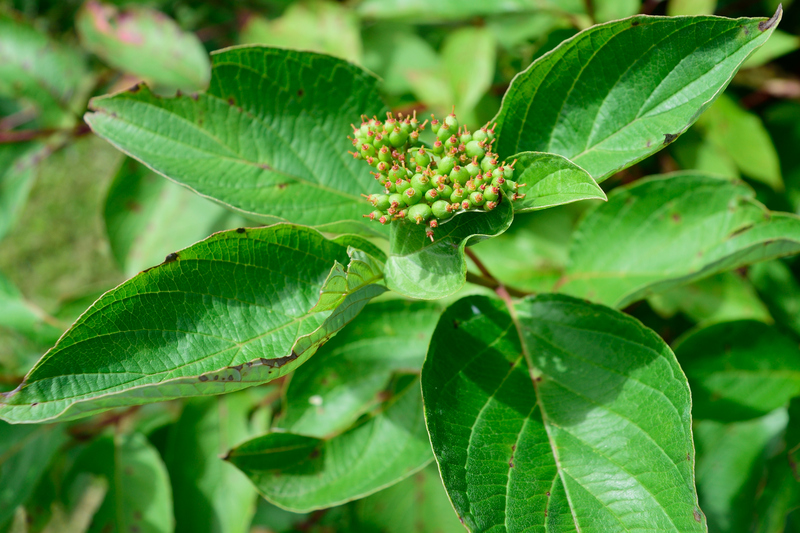Managing High Winds: Strategies for a Resilient Garden
Posted on 11/09/2025
Managing High Winds: Strategies for a Resilient Garden
Gardening can be a rewarding endeavor, but exposure to high winds presents unique challenges that can undermine even the most carefully developed green spaces. In certain regions, strong gusts and storms are frequent, threatening to damage plants, uproot trees, and erode precious soil. Turning your attention to windproof gardening is essential for success, ensuring your garden remains healthy and resilient in the face of volatile weather. This guide explores robust techniques for managing high winds in your garden, fortifying your landscape, and selecting the right plant species to create a wind-resistant oasis.
Why Are High Winds a Threat to Gardens?
Before implementing solutions, it's critical to understand exactly how high winds impact your outdoor space. Strong winds can:
- Break or uproot trees and shrubs
- Shred plant tissues, impeding photosynthesis and growth
- Stress and dehydrate plants by increasing transpiration rates
- Cause significant soil erosion, washing away nutrients
- Damage garden structures, such as greenhouses or fencing
- Spread diseases and pests by moving debris

Designing Wind-Resistant Garden Landscapes
A resilient garden starts with thoughtful design. The layout, choice of materials, and plant selection all play key roles in managing strong winds in gardens.
Step 1: Assess Garden Exposure to Wind
Begin by analyzing your garden's microclimate:
- Identify prevailing wind directions: Notice wind patterns throughout the year, especially during storms.
- Evaluate existing barriers: Note natural windbreaks like walls, hedges, or neighboring buildings.
- Check for vulnerable areas: Exposed sections, slopes, or open fields tend to experience harsher winds.
Step 2: Implement Layered Windbreaks
The best protection against heavy winds is a multi-layered windbreak system. A combination of natural and artificial barriers will create turbulence, slowing wind before it reaches your delicate plants.
- Tall Hedges & Trees: Evergreens, such as yew, holly, or laurel, are effective for year-round shelter. Plant these in staggered or double rows for optimal coverage.
- Mixed Shrub Borders: Incorporate dense and flexible shrubs to cushion wind at lower levels. Viburnum, boxwood, and dogwood are reliable choices.
- Palisade Fencing & Trellises: Semi-permeable fences allow some airflow, reducing damaging gusts versus solid structures that can cause turbulence.
- Natural Berms or Mounds: Earthworks act as subtle windbreaks, particularly effective near veggie beds or flower borders.
Design windbreaks to stand at right angles to prevailing winds and ensure they're at least two to five times as long as their height for full protection.
Step 3: Optimize Plant Placement
Strategic positioning makes a world of difference in wind-resistant gardening:
- Place fragile plants behind taller, hardier species or structures.
- Group plants closely together to create mini wind barriers and mutual support.
- Orient rows across the wind direction wherever possible, rather than parallel to the wind.
Choosing Windproof Plants for Your Garden
Not all plants are created equal in their ability to withstand high winds. Choose varieties known for their resilience, using local recommendations for the best results.
Top Trees and Shrubs for Wind Resistance
The following species are tried-and-tested for storm-prone gardens:
- Sea Buckthorn (Hippophae rhamnoides): With deep roots and flexible branches, ideal for coastal and open areas.
- Pine (Pinus varieties): Their needle-like leaves and conical shapes provide excellent wind screening.
- Japanese Black Pine (Pinus thunbergii): Famous for stability and adaptability to harsh sites.
- Alder (Alnus glutinosa): Rapid growers that fix nitrogen and stabilize soil.
- Privet (Ligustrum species): Dense, semi-evergreen, and fast-growing hedge.
- Olearia (Daisy Bush): Popular for windy, coastal gardens.
Perennials and Groundcovers
Ground-hugging plants and flexible perennials can minimize wind damage and protect the soil:
- Lamb's Ear (Stachys byzantina): Dense mats safeguard the ground.
- Sedum: Low profile and excellent for beds on exposed sites.
- Catmint (Nepeta): Tough, aromatic, and resists wind burn.
- Thyme: Forms thick, wind-resistant mats for rock gardens and borders.
- Artemisia: Silvery foliage and resistance to harsh elements.
Soil Management Tactics for Windy Sites
Soil erosion is a frequent consequence of unmanaged winds. Secure your soil and keep roots strong with these expert tips:
- Mulching: Lay down a thick layer of organic mulch or gravel to weigh down soil, lock in moisture, and protect roots.
- Groundcovers: As mentioned above, spread mat-forming plants through vulnerable areas to act as living mulch.
- Maintain Soil Health: Healthy, well-structured soil with abundant organic matter resists erosion and supports sturdy root systems.
- No-Till Practices: Avoid frequent digging which loosens soil and makes it more susceptible to wind.
Supporting Structures and Staking for Wind Protection
In regions with high winds, physical supports for young or fragile plants are often non-negotiable:
- Staking: Insert stakes at a 45-degree angle, ensuring uptake is gentle to allow some mobility yet prevent uprooting.
- Cages and Supports: Peony cages, mesh trellises, and wire supports are especially useful for tall, top-heavy flowers and vegetables.
- Guy Wires: For young trees, use soft ties and secure guy wires to hold trunks in place.
- Temporary Windbreaks: Erect hessian or windbreak fabric during peak storm seasons for additional support as permanent planting establishes.
Avoid tight, rigid staking which can cause rubbing and injury during strong gusts; plants should have minimal but safe movement.
Seasonal Preparation and Maintenance
Gardens are always evolving. Staying ahead of the weather is essential to mitigate wind damage:
- Regular Pruning: Maintain an open canopy on trees and shrubs. Remove dead, broken, or overcrowded wood, which invites breakage.
- Balanced Fertilization: Avoid over-fertilizing, as soft, rapid growth is more susceptible to snapping in winds.
- Inspect and Repair Barriers: Each season, check fences, trellises, and windbreaks for signs of wear or damage.
- Clean Up Debris: Fallen limbs or loose materials can become projectiles during a storm.
Protecting Containers and Raised Beds
Container gardens and raised beds bring unique flexibility and challenges:
- Heavy Pots & Weighted Bases: Choose sturdy, broad containers, and consider adding brick or rocks at the base for stability.
- Wind-Sheltered Placement: Group pots in protected areas, close to walls or nestled within dense plantings.
- Secure Raised Beds: Anchor frames and ensure the soil is not mounded above the lip, which would expose roots to wind dessication.
Harnessing High Winds for a Healthier Garden
While high winds often seem entirely negative, judicious management can actually improve garden health and resilience:
- Encourage Strong Root Systems: Plants exposed to regular, moderate breezes strengthen their roots and stems for long-term stability.
- Prevent Fungal Diseases: Increased air movement discourages leaf wetness, reducing fungal growth and blight.
- Pollination Benefits: In some species, wind helps distribute pollen and seeds, aiding in the natural cycle of your garden.

Case Study: A Wind-Resilient Garden Design
Imagine a property on a windswept hilltop. By carefully layering windbreaks--with a perimeter belt of pines, a secondary shrub border, and a trellised vegetable garden nestled behind--this home can reduce wind speeds by up to 50% in protected zones. Add groundcover beneath taller trees and use bark mulch to foil soil erosion. Regular inspection, resilient plant selection, and adaptive management together create a garden that not only survives but flourishes.
Conclusion: Building a Truly Wind-Resistant Garden
Facing high winds in your garden may seem daunting, but with these strategic approaches, you can ensure your outdoor space stands firm through every squall. Focus on designing thoughtful windbreaks, choosing tough plants, supporting vulnerable specimens, and employing keen seasonal management. Remember, a resilient garden is not merely about enduring the weather--it's about thriving in harmony with nature's extremes.
Key Takeaways for Managing High Winds in Gardens
- Analyze and respond to your site's unique wind exposure
- Build multiple layers of wind protection, both natural and artificial
- Select windproof plants for every garden layer
- Employ soil management and maintenance as part of your windproofing plan
- Regularly observe and adapt to changing weather conditions
By implementing these strategies, you're setting the stage for a robust, wind-resistant garden that brings joy and greenery--no matter which way the wind blows.

